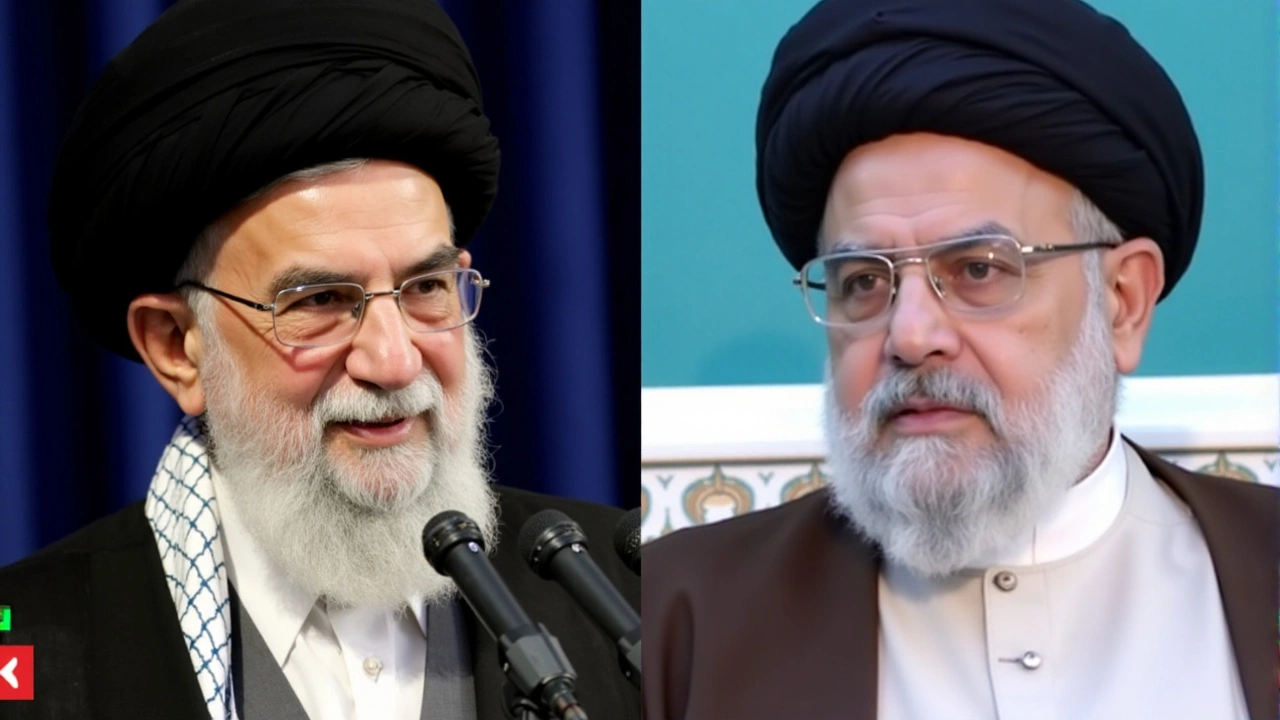Iran's Political Landscape in Flux
Amid swirling speculation, the news of Iran's Supreme Leader Ayatollah Ali Khamenei reportedly entering a coma is sending ripples through the international community. As the highest authority in Iran since 1989, Khamenei has been a pivotal figure in shaping regional politics and Iran's foreign policy. Reports suggesting his critical health condition emerged after an urgent meeting of the Assembly of Experts, the constitutional body that oversees and selects the Supreme Leader. This assembly reportedly convened on September 26 in a bid to discuss succession planning, spotlighting his son, Mojtaba Khamenei, as the next in line.
Ali Khamenei, at 85, has been increasingly frail over recent years, with concerns about his health exacerbating the political tensions within Iran. The New York Times had previously mentioned his serious illness, and there have been whispers of him being on life support due to possible poisoning. Trying to quell these rumors, his office published an image showing him meeting Iran's Ambassador to Lebanon, an attempt often viewed as a deliberate move to debunk the whispers of his coma. Despite these efforts, the pressing question remains: who will take the helm if Khamenei cannot continue, and how will his succession shape Iran's future?
The Rise of Mojtaba Khamenei
Mojtaba Khamenei, who appears to be the designated successor, is not just the Supreme Leader's son; he is a significant figure in his own right. Born in 1968, Mojtaba has carved out a powerful role within Iran’s political and clerical circles. His close ties with the Iranian Revolutionary Guard Corps (IRGC) have cemented his footing within the power structure. With a strategic mind, Mojtaba played key roles in landmark events like the suppression of the 2009 post-election protests, which marked a turning point in Iranian civil activism.
Among Iran's political elite, Mojtaba’s influence has been rising, bolstered by his involvement in shaping Iran’s regional policies and maintaining connections with influential groups like Hezbollah. His potential rise to the position of Supreme Leader, however, has raised eyebrows and sparked debate over whether this marks the onset of a political dynasty in a country built on revolutionary principles that initially rejected such constructs.
Implications for Iran’s Future
The possible leadership transition comes at a critical juncture for Iran, both domestically and internationally. Domestically, it could further entrench the existing political and ideological stalemate, particularly if Mojtaba ascends and continues his father's hardline policies. Internationally, Iran’s geopolitical maneuvering—especially in relation to its adversaries like Israel and strained ties with the West—will likely face new challenges depending on how seamlessly or turbulently this transition unfolds.
Observers point out that Mojtaba’s rise might recalibrate Iran's posture on the global stage. With Iran being a crucial actor in regional geopolitics, any shift in leadership under such clandestine and tense conditions is bound to influence Iran's strategic priorities. This situation is closely monitored by a host of international stakeholders invested in Middle Eastern stability, as Iran plays a critical part in ongoing conflicts and alliances.
Criticism and Support Within Iran
In Iran, reactions to Mojtaba Khamenei’s expected succession have been mixed. Supporters highlight his deep connections and extensive political experience, arguing these assets would serve to stabilize the nation during a potentially tumultuous transition. Confident in his ability to maintain the status quo, many in the IRGC and among conservative clerics regard him as the ideal candidate to preserve the Islamic Republic’s ideals as laid out by its forebears.
Conversely, critics voice apprehensions about the notion of a dynastic succession in Iranian politics. For a nation built on a revolutionary mantra of opposing tyrannical rule, fostering ideological purity is sacrosanct, and the perception of a ruling family could conflict with those foundational values. This tension poses a unique challenge for Iran as it confronts internal and external threats during this leadership shift.
The global community keeps a watchful eye on Iran, aware that subtle changes in its leadership can reverberate far beyond its borders. The unfolding developments will likely influence diplomatic strategies, economic sanctions, and potentially, the overall stability of the Middle East, a testament to Iran's significant role in regional affairs. As these events continue to develop, stakeholders worldwide anxiously await how Iran will steer its future course and navigate the implications of a crucial change at the highest echelon of power.

Write a comment